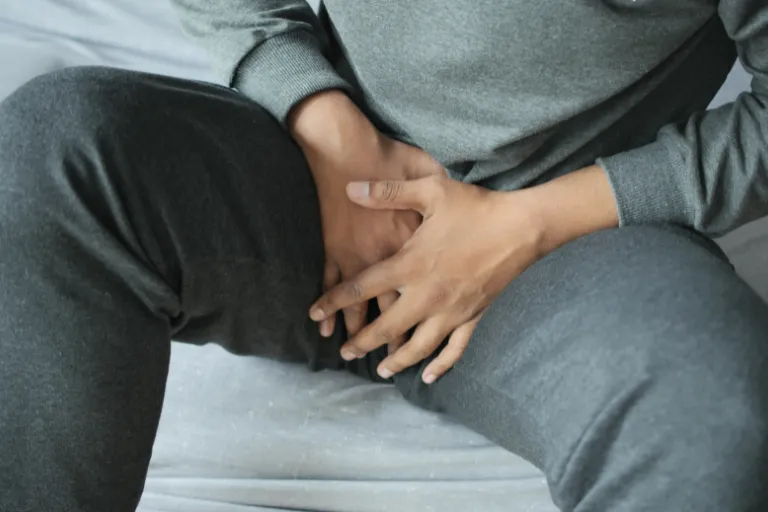Key Points:
- Prostate enlargement, also called benign prostatic hyperplasia (BPH), is a common issue in men as they age.
- Symptoms often involve frequent urination, urgency, or difficulty starting and maintaining urine flow.
- Left unaddressed, BPH can impact quality of life and sometimes lead to complications.
- Therapies range from lifestyle adjustments and medications to minimally invasive procedures and surgery.
The Unspoken Discomfort: Why Prostate Enlargement Deserves Attention
Imagine a nightly routine interrupted not by an alarm clock but by a full bladder—sometimes two or three times before dawn. For many men over 50, this is more than just an inconvenience; it’s a sign of prostate enlargement. What starts as subtle changes in bathroom habits can quietly erode sleep, concentration, and overall quality of life. Despite how widespread it is, BPH often remains a hushed topic—rarely discussed until symptoms become disruptive.
Why Benign Prostatic Hyperplasia Matters for Men’s Health
Prostate enlargement, medically referred to as benign prostatic hyperplasia (BPH), affects about half of men between 51 and 60, and up to 90% of men over 80 (National Institute of Diabetes and Digestive and Kidney Diseases [NIDDK], 2021). While not cancerous, the symptom can significantly interfere with daily living. Beyond the inconvenience, untreated BPH can lead to urinary tract infections, bladder stones, or even kidney damage (Mayo Clinic, 2023). Recognizing the early signs and knowing what solutions exist can make all the difference.
Recognizing the Symptoms of an Enlarged Prostate in Daily Life
An enlarged prostate presses on the urethra—the tube that carries urine out of the body—making urination more challenging. Common signs include:
- Frequent urination, especially at night (nocturia)
- Difficulty starting or maintaining urine flow
- A weak or interrupted stream
- Sudden, urgent need to urinate
- Feeling as if the bladder isn’t completely empty
These symptoms are more than physical discomfort—they can drain energy, interrupt sleep, and reduce overall well-being (Barry et al., 1997).
What Causes the Prostate to Enlarge? The Science Behind BPH
The prostate is a walnut-sized gland located just below the bladder, surrounding the urethra. Its main job is producing fluid that nourishes sperm.
As men age, hormonal shifts—particularly in testosterone and its more potent derivative, dihydrotestosterone (DHT)—play a central role in stimulating prostate growth (McVary, 2006). Genetics and inflammation may also contribute. Unlike prostate cancer, which involves abnormal cell growth, BPH results from non-cancerous enlargement of glandular and muscle tissue.
The growth itself isn’t dangerous, but the narrowing of the urethra and pressure on the bladder cause the frustrating urinary symptoms.
How Prostate Enlargement Is Diagnosed and Evaluated
BPH often goes underdiagnosed because men may normalize their symptoms. But a proper evaluation by a health professional can clarify what’s happening. Common screening tools include:
- Questionnaires to assess urinary frequency and severity
- Digital rectal exam (DRE): allows the health professional to feel for enlargement
- Urine tests: to rule out infection
- Prostate-specific antigen (PSA) test: while often used in cancer screening, it can also help in evaluating prostate health (Crawford et al., 2014)
- Ultrasound or uroflowmetry: in more advanced cases, to measure bladder function and urine flow
Effective Therapies for Prostate Enlargement: From Lifestyle Changes to Surgery
Fortunately, several evidence-based solutions exist, ranging from watchful waiting to advanced procedures.
Lifestyle adjustments (best for mild symptoms):
- Reducing evening fluid intake
- Limiting caffeine and alcohol, which can increase urgency
- Practicing timed voiding to retrain bladder habits
- Staying active to improve overall urinary health (Sarma & Wei, 2012)
Medications:
- Alpha blockers (e.g., tamsulosin) relax muscles in the prostate and bladder neck, easing flow.
- 5-alpha-reductase inhibitors (e.g., finasteride) shrink the prostate by lowering DHT levels.
- Sometimes, both are prescribed together (McConnell et al., 2003).
Minimally invasive therapies:
- UroLift system: tiny implants hold the prostate tissue apart to reduce pressure on the urethra.
- Rezūm therapy: uses water vapor to shrink excess tissue.
- Laser procedures: vaporize or remove overgrown tissue with precision (Roehrborn, 2017).
Surgery:
- In severe cases, traditional surgeries like TURP (transurethral resection of the prostate) remain highly effective (Rassweiler et al., 2006).
Each option carries benefits and limitations. The right choice depends on the user’s age, overall health, and severity of symptoms.
Complementary Approaches to Support Prostate and Urinary Health
While therapies remain the mainstay, complementary approaches may provide additional comfort:
- Pelvic floor exercises (Kegels): strengthen bladder control.
- Healthy diet: diets rich in vegetables, fruits, and healthy fats may support prostate health (Parsons et al., 2008).
- Weight management: obesity is linked with worse urinary symptoms (Kristal et al., 2007).
- Herbal supplements: such as saw palmetto, have been studied, but results are mixed and should be discussed with a health professional before use (Tacklind et al., 2012).
A Path Forward: Taking Action on Prostate Enlargement Early
Prostate enlargement is not rare, nor is it something men should silently tolerate. It’s a predictable part of aging for many, but today’s therapies—from simple lifestyle changes to advanced procedures—offer ways to regain control and restore daily comfort.
If changes in urinary habits start to interfere with life, the most important step is an open conversation with a health professional. Early recognition can prevent complications, improve sleep, and protect overall well-being.
✅ Next Step: Learn more at the National Institute of Diabetes and Digestive and Kidney Diseases or talk to your health professional about screening and solutions for BPH.
The article does not in any way constitute as medical advice. Please seek consultation with a licensed medical professional before starting any treatment. This website may receive commissions from the links or products mentioned in this article.
Subscribe for Free for more insightful health articles tailored to your needs.
Sources
- Barry, M. J., Fowler, F. J., O’Leary, M. P., Bruskewitz, R. C., Holtgrewe, H. L., Mebust, W. K., & Cockett, A. T. K. (1997). The American Urological Association symptom index for benign prostatic hyperplasia. Journal of Urology, 157(2), 846–849. https://doi.org/10.1016/S0022-5347(01)65186-1
- Crawford, E. D., Wilson, S. S., McConnell, J. D., Slawin, K. M., Lieber, M. C., Smith, J. A., … & Roehrborn, C. G. (2014). Baseline factors as predictors of clinical progression of benign prostatic hyperplasia in men treated with placebo. Journal of Urology, 171(3), 1022–1027. https://doi.org/10.1097/01.ju.0000113279.64486.e6
- Kristal, A. R., Arnold, K. B., Schenk, J. M., Neuhouser, M. L., Goodman, P., Penson, D. F., & Thompson, I. M. (2007). Race/ethnicity, obesity, health related behaviors and the risk of symptomatic benign prostatic hyperplasia: Results from the prostate cancer prevention trial. Journal of Urology, 177(4), 1395–1400. https://doi.org/10.1016/j.juro.2006.11.077
- Mayo Clinic. (2023). Benign prostatic hyperplasia (BPH). Retrieved from https://www.mayoclinic.org/diseases-conditions/benign-prostatic-hyperplasia
- McConnell, J. D., Roehrborn, C. G., Bautista, O. M., Andriole, G. L., Dixon, C. M., Kusek, J. W., … & Lepor, H. (2003). The long-term effect of doxazosin, finasteride, and combination therapy on the clinical progression of benign prostatic hyperplasia. New England Journal of Medicine, 349(25), 2387–2398. https://doi.org/10.1056/NEJMoa030656
- McVary, K. T. (2006). BPH: Epidemiology and comorbidities. American Journal of Managed Care, 12(Suppl 5), S122–S128. https://pubmed.ncbi.nlm.nih.gov/16613526/
- National Institute of Diabetes and Digestive and Kidney Diseases. (2021). Prostate enlargement (benign prostatic hyperplasia). Retrieved from https://www.niddk.nih.gov/health-information/urologic-diseases/prostate-problems/benign-prostatic-hyperplasia
- Parsons, J. K., Kashefi, C., De Marzo, A. M., Platz, E. A., & Nelson, W. G. (2008). Obesity and benign prostatic hyperplasia: Clinical connections and mechanistic insights. Urology, 71(3), 456–460. https://doi.org/10.1016/j.urology.2007.09.061
- Rassweiler, J., Teber, D., Kuntz, R., & Hofmann, R. (2006). Complications of transurethral resection of the prostate (TURP)—Incidence, management, and prevention. European Urology, 50(5), 969–979. https://doi.org/10.1016/j.eururo.2005.12.042
- Roehrborn, C. G. (2017). Pathology of benign prostatic hyperplasia. International Journal of Impotence Research, 29(3), 105–112. https://doi.org/10.1038/ijir.2017.6
- Sarma, A. V., & Wei, J. T. (2012). Benign prostatic hyperplasia and lower urinary tract symptoms. New England Journal of Medicine, 367(3), 248–257. https://doi.org/10.1056/NEJMcp1106637
- Tacklind, J., MacDonald, R., Rutks, I., & Wilt, T. J. (2012). Serenoa repens for benign prostatic hyperplasia. Cochrane Database of Systematic Reviews, 12. https://doi.org/10.1002/14651858.CD001423.pub3
Last Updated on August 21, 2025



